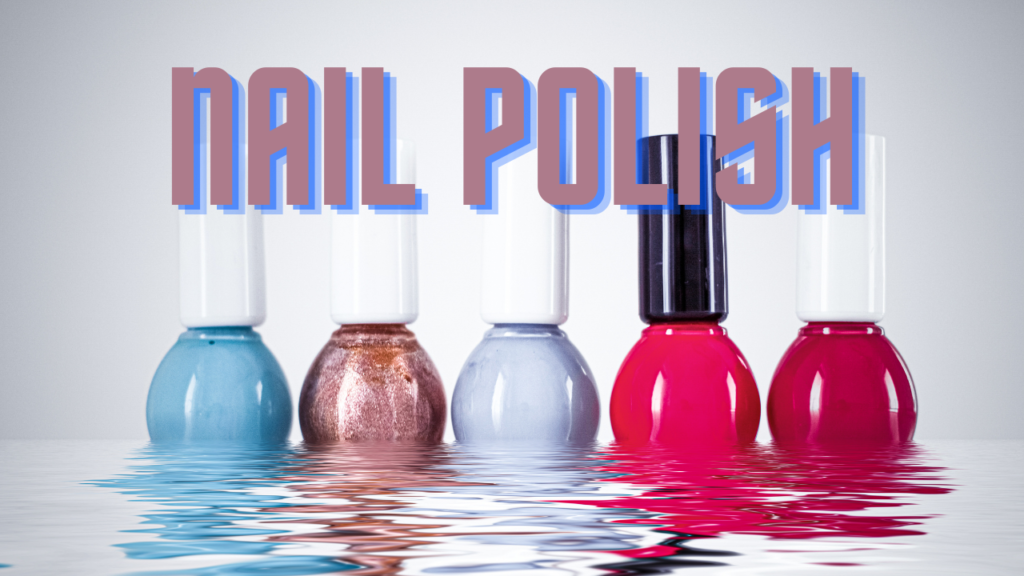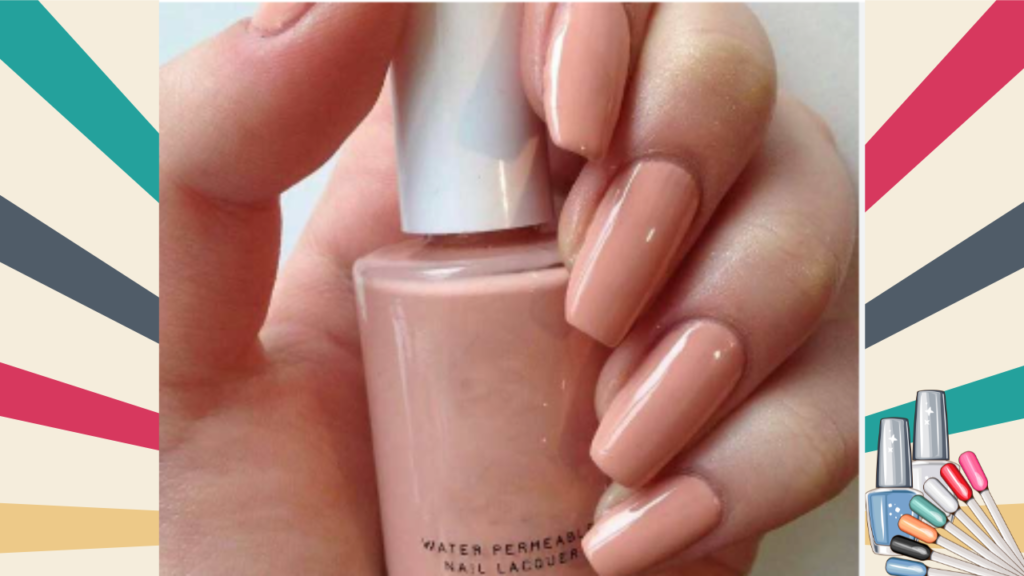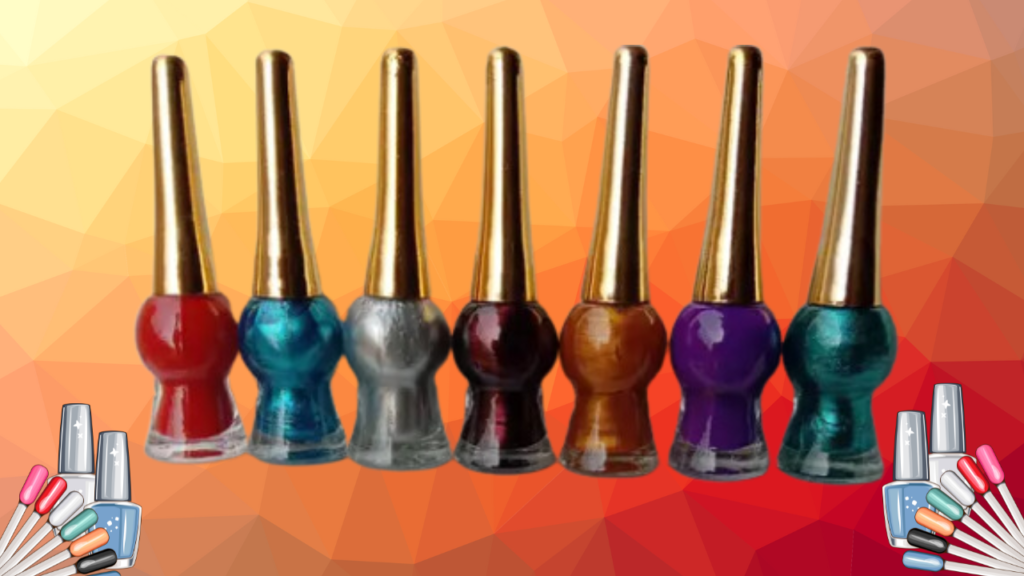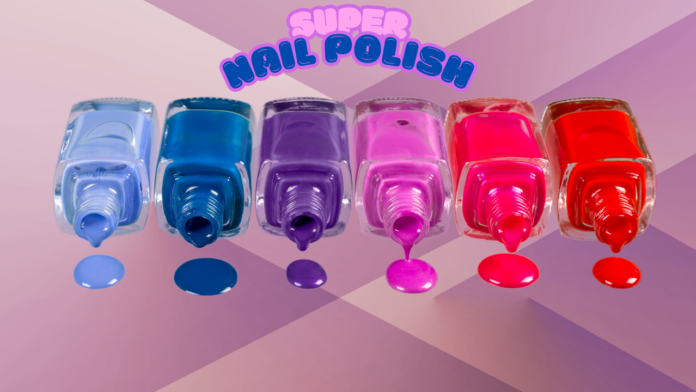Nail polish is a cosmetic product applied to nails to improve their appearance. It usually comes in liquid form and is applied with a brush. Nail polish can add color, shine, or pattern to nails and is often used to match or complement one’s outfit or personal style. There are several types, including: Traditional nail polish: Offers a variety of colors and finishes, such as matte, glossy, or glitter.
1.Gel nail polish: Requires curing under a UV or LED lamp to set and lasts longer than traditional polish.
2.Shellac: A hybrid between traditional polish and gel, providing a durable finish that also requires a lamp to cure.
Nail polish is usually removed with nail polish remover, often containing acetone or non-acetone solvents.

Do you need nail polish? Exploring its benefits and drawbacks
It has long been an integral part of the world of beauty and self-expression. From its rich history to its various modern formulations, it is more than just a cosmetic product – it is a statement. But with so many options available and varying opinions on its necessity, it is important to figure out if nail polish is something you really need. In this comprehensive guide, we will discuss its benefits, drawbacks and considerations in depth to help you make an informed decision.
The charm of nail polish
Nail polish serves as a versatile tool for personal expression and aesthetics. With a wide range of colors, finishes and designs, it allows individuals to spruce up their appearance and show off their style. Whether it is a classic red, a glossy sheen or a trendy matte finish, nail polish offers endless possibilities to experiment and show off individuality.
Benefits of Nail Polish
1.Self-expression:
Nail polish is a means of self-expression. By choosing different colors, patterns, or finishes, you can reflect your personality, mood, or fashion sense. Seasonal colors and trendy designs allow you to keep up with current styles and show off your unique style.
2.Boost confidence:
For many people, well-groomed, polished nails can be a confidence booster. The simple act of applying nail polish can make you feel more streamlined and professional, enhancing your overall look.
3.Special occasions:
Nail polish adds a finishing touch to special occasions, from weddings to parties. Coordinating your nail color with your outfit or event theme can complete your look and make you feel more festive and elegant.
4.Nail protection:
Certain types of nail polish, particularly those with strengthening properties or added nutrients, can provide a protective layer for your nails. This can help prevent cracking and breaking, which keeps nails healthier over time.
5.Creative outlet:
Nail art has become a popular form of creativity, allowing you to experiment with designs and techniques. From intricate patterns to minimalist designs, nail art can be a fun and artistic way to express yourself.
Drawbacks of nail polish
Although nail polish has many benefits, it also has some drawbacks. Here are a few things to keep in mind:
1. Chemical ingredients:
Many nail polishes contain chemicals such as formaldehyde, toluene, and dibutyl phthalate (DBP), which can be harmful when used frequently or in poorly ventilated areas. Although many brands offer “5-free” or “10-free” formulas to reduce harmful ingredients, it’s important to be careful about what you’re putting on your nails.
2. Maintenance:
Applying and maintaining it can be time-consuming. Regular touch-ups and removal can become a hassle, especially if your nails are prone to breakage or if your polish wears off quickly.
3. Damage to nails:
Frequent use of nail polish, especially when combined with harsh removers, can cause nails to become dry and brittle. The polish removal process, especially if it involves acetone, can remove natural oils and weaken the nail surface.
4. Environmental impact:
The production and disposal of it can have environmental consequences. The use of non-biodegradable packaging and the release of volatile organic compounds (VOCs) contribute to environmental pollution.
5. Allergies and sensitivities:
Some individuals may experience allergies or sensitivities to certain nail polish ingredients. If you have sensitive skin or are prone to allergies, it is important to choose a hypoallergenic or non-toxic nail polish option.
Nail Polish Alternatives
If you’re considering alternatives to traditional nail polish, there are several options available:
1.Nail strengthening treatments:
If you’re primarily interested in improving nail health rather than adding color, nail strengthening treatments can be a great option. These treatments often contain nourishing ingredients to help strengthen and protect your nails.
2. Nail care and grooming:
Focusing on nail care and grooming can also be beneficial. Regular trimming, filing, and moisturizing can keep your nails clean and healthy without the need for polish.
3. Clear nail coats:
Clear nail coats or topcoats can provide your nails with a glossy finish and protect them without the need for color. These products can add shine and durability while maintaining a natural look.
4. Natural nail products:
Natural and organic nail polish alternatives are available that minimize harmful chemicals. These products are often formulated with safer ingredients and can be a good compromise if you still want to use polish but with fewer environmental concerns.

Making the decision
Ultimately, whether or not you need nail polish depends on your personal preferences and lifestyle. Here are some factors to consider when making your decision:
- Personal Style: If nail polish is an essential part of your style and you enjoy experimenting with colors and designs, it’s a valid choice. For those who see nail polish as a form of self-expression and confidence, it can be an important aspect of their beauty routine.
2. Health Considerations: If you have concerns about the health effects of nail polish or experience adverse reactions, exploring alternatives or choosing safer, non-toxic products may be beneficial.
3. Time and Maintenance: Consider how much time you’re willing to invest in applying and maintaining nail polish. If you prefer a low-maintenance routine, focusing on natural nail care might be a better option.
4. Environmental Impact: If environmental concerns are important to you, consider choosing eco-friendly nail polish brands or exploring alternatives that have a lower environmental footprint.
Conclusion
In conclusion, the decision to use nail polish is a personal one, shaped by your preferences, lifestyle, and values. While nail polish offers a range of benefits, including self-expression and confidence, it’s important to weigh these against potential drawbacks such as chemical exposure and maintenance. By considering your needs and exploring alternatives, you can make an informed choice that aligns with your individual style and priorities. Whether you choose to embrace the world of nail polish or opt for a different approach, the key is to find what works best for you and makes you feel your best.
How nail paint made people’s lives happier
Nail paint, often viewed as a cosmetic product, has had a significant impact on people’s lives, bringing happiness and joy in various ways. Here’s how nail paint has contributed to making people’s lives more enjoyable and fulfilling:
- Self-expression and creativity
1.1. Personal identity:
Nail paint allows individuals to express their personal style and identity. From bold, vibrant colors to intricate designs, it provides a canvas for creativity and individuality. This form of self-expression helps people feel more authentic and confident in their appearance.
1.2. Artistic outlet:
For many, nail painting is not just about color but about art. Nail art enthusiasts use their nails as a medium to create elaborate designs, patterns, and even miniature artworks. This creative outlet provides a sense of accomplishment and satisfaction, which contributes to overall happiness.
- Boosting confidence
2.1. Improved appearance:
A new coat of nail polish can make a person feel more polished and attractive. This improvement in appearance often results in an increase in self-esteem and confidence, which positively affects social interactions and personal self-worth.
2.2. Celebrating achievements:
People often use nail paint to mark special occasions, accomplishments or milestones. Whether it’s a job promotion, graduation or personal victory, celebrating with a new nail color or design adds a sense of celebration and personal happiness.
- Social engagement
3.1. Bonding activity:
Nail painting can be a social activity, whether it’s an informal get-together with friends or a professional manicure appointment. This shared experience creates bonding opportunities and promotes connection, which increases social well-being and happiness.
3.2. Trends and communities:
The nail art community thrives both online and offline, where enthusiasts share tips, designs, and inspiration. Engaging with this community gives people a sense of belonging and connection, enriching people’s social lives and personal enjoyment.
- Personal care and rituals
4.1. Self-care routines:
Applying nail polish is often part of a self-care routine. The process of taking time to pamper oneself, whether through an at-home manicure or visiting a professional salon, contributes to relaxation and mental health. This ritual provides a break from daily stress and increases overall happiness.
4.2. Maintaining grooming:
Regularly painting one’s nails can be part of a grooming routine that contributes to a sense of order and care. Being well-groomed can have a positive effect on a person’s mood and self-perception, leading to greater satisfaction and happiness.
- Empowerment through choice
5.1. Freedom of expression:
Nail polish empowers individuals to make choices about their appearance. This freedom allows people to experiment with different looks, embrace their personal preferences, and feel more control over their self-presentation.
5.2. Breaking the norm:
For some people, nail paint represents a break from conventional norms and expectations. Embracing unconventional colors or designs can be a form of rebellion or empowerment, allowing a person to challenge social standards and celebrate their unique identity.
- Emotional well-being
6.1. Improve mood:
Color psychology suggests that different colors can affect mood and emotions. Choosing nail colors that resonate with one’s emotions or desired state of mind can contribute to emotional well-being and overall happiness.

6.2. Instant gratification:
The immediate visual impact of nail paint provides a sense of instant gratification. The simple act of changing nail color can be a quick and effective way to lift one’s mood and enjoy a moment of personal joy.
- Festive Moments
7.1. Festivals and Events:
Nail paint plays a role in celebrating festivals and special events. From festive designs for holidays to themed colors for parties, it adds to the excitement and joy of these occasions, making them more memorable and enjoyable.
7.2. Personal Milestones:
Marking personal milestones with a new nail design or color creates a sense of accomplishment and celebration. Whether it is a new job, a personal goal, or a special event, nail paint becomes a symbol of celebration and joy.
Conclusion
Nail paint, although appearing to be a simple cosmetic product, has a profound impact on people’s lives by enhancing self-expression, boosting self-confidence, promoting social relationships, and contributing to emotional well-being. Its ability to bring joy through creativity, personal care, and celebration underscores its importance in making people’s lives happier and more fulfilling. Whether through the art of nail design or the simple joy of a new coat of color, nail paint enriches the human experience in meaningful ways.
I hope this helps explain how nail paint has positively impacted people’s lives! If you need any further details or adjustments, just let me know.
FAQs
Here are some frequently asked questions (FAQs) about nail polish that you may find helpful:
1. What is nail polish?
It is a cosmetic product applied to nails to add color, shine, and sometimes texture. It is usually made of a combination of solvents, resins, and pigments.
2. How do I apply nail polish?
Prepare your nails: Remove old polish, file the nails, and push back the cuticles.
Apply a base coat: This helps protect your nails and make the polish last longer.
Apply the nail polish: Start with a thin layer and let it dry before applying a second coat.
Apply a top coat: This adds shine and prevents cracking.
3. How long does nail polish last?
It can last from a few days to a week, depending on factors such as the quality of the polish, application technique, and daily activities.
4. How do I remove nail polish?
You can remove it using nail polish remover, which usually contains acetone or non-acetone solvents. Soak a cotton ball in the remover and gently wipe away the polish.
5. What are the different types of nail polish?
Regular nail polish: Standard formula for everyday use.
Gel nail polish: Requires curing under a UV or LED lamp for long-lasting results.
Shellac: A hybrid of regular and gel polish, also requires curing.
Matte nail polish: Provides a non-shiny finish.
Glitter nail polish: Contains glitter particles for a sparkling effect.
6. How can I make my nail polish last longer?
Apply a base coat: Helps with adhesion.
Use a top coat: Seals and protects the polish.
Avoid excessive water exposure: Wear gloves when washing dishes or cleaning.
Touch up chips: Fix any chips immediately if they appear.
7. Is nail polish safe to use?
Most nail polishes are safe when used as directed. However, some people may experience allergies or sensitivities. If you have concerns, look for non-toxic or hypoallergenic options.
8. Can nail polish be applied to toenails?
Yes, it can be applied to toenails. The application process is the same as for hand nails.
9. How should I store nail polish?
Store nail polish in a cool, dry place away from direct sunlight. Make sure the lid is tightly closed to prevent the polish from drying out.
9. What should I do if my nail polish becomes thick or sticky?
You can add a few drops of nail polish thinner to restore its consistency. Avoid using it remover for this purpose, as it may affect the quality of the polish.
If you have a specific question or need more information, feel free to ask!



[…] attention and praise during the 1954 FIFA World Cup, when the German national soccer team wore Adidas shoes and won the championship. This victory not only highlighted the effectiveness of Dassler’s designs, but also […]
[…] What is paint remover and how to use ? […]